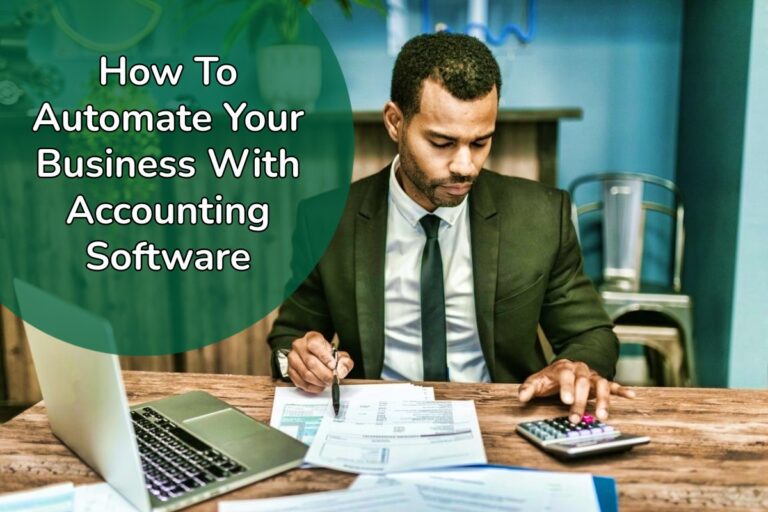Are you looking to reduce the amount of time you spend on bookkeeping and accounting for your Canadian small business? You better use an accounting software to keep track of your revenues, expenses, invoicing and financial reporting.
Using a small business accounting software is one of our tops tips when it comes to improving the productivity of your small business. Having a good handle on your accounting process is good because:
- Less time wasted keeping track of complex spreadsheets
- Automated financial reporting
- Payments and invoicing is taken care of automatically
- Easy tax reporting to reduce tax time headaches
- Sell your business easier to investors who can trust your financial history
Follow these 3 simple steps below to automate your accounting operations and free up time to do the things you love.
1. Determine the complexity of your accounting process
What type of business are you running? Are you a solopreneur providing freelance business services or are you running a 50-person company that sells products all over the world?
Your accounting process will differ greatly based on how complex your business operations are.
The most common tasks that Canadian small businesses of all sizes can streamline by using account software are:
- Invoicing
- Tracking revenues
- Tracking expenses
- Online payments
- Financial analysis and reporting
- Tax compliance
- Timesheets
Think of how much time you’d be saving if you had all of those accounting operations contained in one easy to use place!
Alos, no more spreadsheets, no more papers to file and less stress trying to keep track of all the different incoming and outgoing payments you have.
For a solopreneur with a service business you can probably use a free or basic accounting software for your needs.
For a small to medium sized business owner with multiple products and operations you’ll want a more advanced software to help automate each aspect of your operation.
Finally, be honest with yourself about how much time you’re willing to put into a new accounting software. The goal is to improve efficiency for your business, not create another headache.
So, map out your business process and then determine the complexity of your accounting process on a scale of Low-Medium-High before picking an accounting software.
2. Choose an accounting software
The next step is to find and test an accounting software that matches the needs of your small business.
Check out the guide to the best accounting software for small business in Canada for a comprehensive analysis of the top softwares most often used by business owners.
Here is a quick summary of both the free and paid accounting software options that you can try.
Free Small Business Accounting Software
If your business finances are not too complex then a free accounting software might be the perfect fit for you.
Check out these free accounting software options first:
- ReInvestWealth – Best Canadian option
- ZipBooks – Best for unlimited invoices and basic reporting
- Momenteo – Best for expense management and time tracking
- Wave – Best for user friendly accounting software
- Sunrise – Best for solopreneurs
- Akaunting – Best free and open-source software
Paid Small Business Accounting Software
Larger Canadian businesses will benefit from an accounting software with more features, more accounts and more integrations than most free options can provide.
Also, paid software often passes on savings per transaction which can help keep your costs down if your business is has a high number of transactions every month.
For bigger SMB owners check out these paid accounting software options first:
- Quickbooks – Best overall accounting software
- Freshbooks – Best made-in-Canada accounting software
- Xero – Best comprehensive features and tools
- AccountEdge Pro – Best for experienced accountants
- Sage Accounting – Best for bigger businesses
3. Integrate accounting software with your business
Remember, the number one goal of using an accounting software is to save you time.
Second, you’ll develop a better sense of the financial health of your business by looking at reporting and analytics so you can better manage your expenses, invoicing and project management processes.
To do all of that properly you need to integrate the accounting software.
Here are the most important integrations you need to look at:
- Bank accounts
- Credit cards
- Payment providers (PayPal – Stripe – Square etc.)
- Payroll
- Project management software
- Time management software
- Email marketing
- E-commerce platforms
- Expense tracking platforms (if not included in your software)
- Customer service software
There is a good chance you are only using a few of the items listed above.
Make sure your basic integrations like bank accounts and payment providers are set up first which will help you start tracking revenues and expenses.
Next, link your new accounting software to your email marketing and customer service platforms to expedite invoicing and support.
Finally, further streamline your business with payroll or project management software to manage your employees, projects and client tasks.
Pretty soon – your business will be running itself and you can sit back and work on the high level strategic and management tasks which will truly take your business to the next level.
Final Thoughts
Accounting is one of the most tedious and time consuming aspects of your business.
But, it is also one of the most important.
Accounting drives an understanding of the financial health of your business and is critical for doing your taxes.
So, use an accounting software to make the whole process easier!
Remember these 3 steps:
- Determine the complexity of your accounting process
- Choose an accounting software
- Integrate accounting software with your business
Complete these steps and watch your free time come back to you.
Plus, you’ll be more confident in the financial health of your business and understanding of the key drivers of profitability (revenues and expenses) for you to work on.

